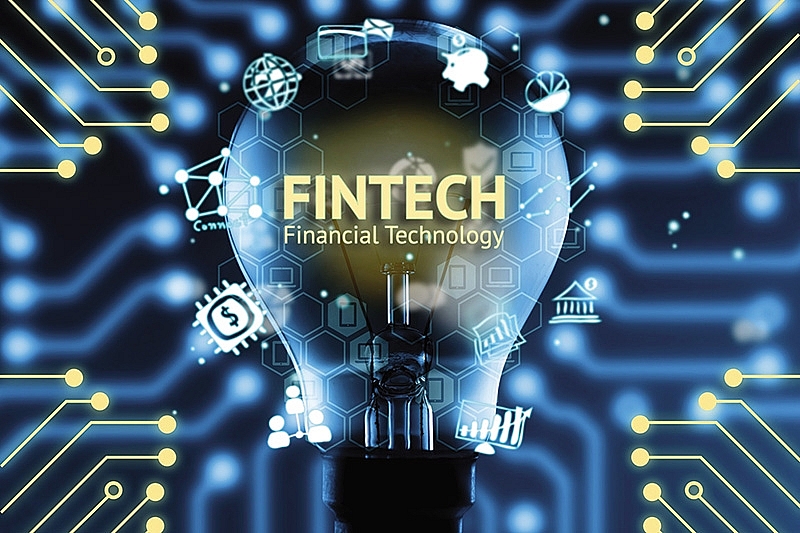How Vietnam will adapt to the fintech revolution
 |
| Vietnam’s low participation rate in banking provides challenges and opportunities for the growing fintech sector |
So what is it about fintech in Vietnam? Duong Nguyen, financial services and IT advisory leader at EY Vietnam, analyses the situation.
 |
| Duong Nguyen |
To have and have not
Only 59 per cent of Vietnam’s population have a formal bank account, while the rest have no access to banking services. Due to these relatively low financial inclusion rates, Vietnam is among the 25 priority countries on which the World Bank is focusing its financial inclusion efforts through the “Universal Financial Access (UFA) by 2020” initiative, which seeks to bring two billion unbanked people into the formal financial system. Since 2016, the State Bank of Vietnam has been partnering with the World Bank on a comprehensive approach to financial inclusion, which will result in a national financial inclusion strategy towards a cashless economy. Considering this, can we say fintech was born from the desire for change in the developing world?
With all the favourable factors – from the rapidly expanding economy and the young, urban, digital-savvy population to the increasing mobile and internet penetration – fintech plays a key role in significantly improving Vietnamese people’s access to financial services.
The era of digital payment
Access to financial services begins with payment. The point is not just for people to possess a bank account, but to use it to improve their well-being. The example of financial inclusion and mobile money in Kenya is well known. Today, more than 70 per cent of Kenyans use their mobile phones to make transactions from their mobile money accounts. In Mongolia, mobile money account ownership has risen from under 5 per cent to around 20 per cent. In Southeast Asia, we have seen several significant investments in fintech payment. In 2017, InstaRem, one of the Asia-Pacific region’s leading digital cross-border payment companies, received a $13 million investment led by GSR Ventures, with participation from SBI-FMO Ventures, Vertex Ventures, Fullerton Financial Holdings, and Global Founders Capital. In the Philippines, Ant Financial, the financial technology company founded by Alibaba’s Jack Ma, bought a 45-per-cent stake in Globe Fintech Innovations’ Mynt. Mynt, previously a wholly owned subsidiary of Globe Capital Venture Holdings under Globe and Ayala Corporation, operates GCash, a micro-payment service which permits consumers to use their smartphones to pay bills and purchase goods.
Similarly, in Vietnam, it is all about digital payment. We have witnessed a boom in the development of a cashless Vietnamese society. Major deals include the co-operation between South Korea’s UTC Investment Group and VNPT Electronic Payment Company (VNPT Epay), as part of which UTC spent VND542 billion ($24 million) acquiring a 65-per-cent stake in VNPT Epay from VMG Media and a number of individual shareholders; MOL Access Portal’s acquisition of 50 per cent of Ngan Luong’s shares; NTT Data’s acquisition of 64 per cent of Payoo’s shares; True Money buying a 40-per-cent stake in 1Pay; and an investor group including Credit Saison, Golden Gate Ventures, and GMO Global Payment Fund purchasing a 25-per-cent stake in payment gateway company Bao Kim.
Vietnamese fintech companies are focusing on the field of payments, with 47 per cent of Vietnamese companies working on payment services, the highest rate in the region. More fintech firms are born in the payment sector every day, and forecasts say the transaction value of digital payments will reach $12.2 billion by 2022.
A new age of financial services
Innovative technologies bring financial institutions and fintech startups closer. The spreading of these startups also means that established financial institutions can look forward to a market that will increasingly be about partnerships as part of their digital banking strategy growth. In ASEAN, banks have been actively collaborating with fintechs to drive efficiency and enhance customer experience. Most banks have an incubator, accelerator, or innovation lab which helps drive collaboration with fintech firms. Some ASEAN banks have also launched fintech-focused investment funds.
Today, Vietnamese banks are in the first phase of their digital revolution, where most banks collaborate with fintech firms to offer their customers high-quality online banking websites, mobile apps, and other digital initiatives such as loan origination, front-end customer acquisition, and payment processing. These institutions started providing new and digitally differentiated ways of offering financial services to the consumer. For example, VIB co-operated with Weezi, a young, motivated Vietnamese fintech startup, to launch an embedded social keyboard that allows their customers to transfer money and to check account balances easily on their smartphones. VietinBank announced a partnership with Opportunity Network, a leading UK fintech, to create a digital small and medium-sized enterprise (SME) platform which helps their SME customers acquire funding more quickly. Similarly, TPBank recently co-operated with local fintech Instant.vn on developing an SME lending platform. In the near future, banks in Vietnam will increasingly look to apply fintechs across their entire value chain, from front-end and back-end to enhancing customer service and driving greater productivity.
The future of M&As in Vietnamese fintech
Mergers and acquisitions (M&A) could be the future trend for fintech in Vietnam. Fintech is an M&A focus for financial sponsors and an investment focus for many established financial institutions. Global financial institutions are increasingly looking to “market infrastructure” fintechs as a cure for internal cost management and an enabler to unlock the benefits of disruptive technology. Acquiring a fintech firm can increase a bank’s digital footprint and shortcut the development of new technology. Large global banks have been engaging in this fintech approach due to its benefits, such as a rapid route into new markets, new customers at low cost, opportunities to cross-sell, product differentiation, and access to talent and innovative culture. Notable fintech deals this year include TD Bank in January acquiring Layer 6, an artificial intelligence company based in Toronto that uses technology to offer personalised and predictive communications to financial services customers. JPMorgan Chase acquired two payment-oriented startups in 2017. This aligns with the organisational goal of scaling Chase Pay, the bank’s payments solution.
Despite the global trend, we have not seen many financial institutions acquiring fintechs in Vietnam. From a technical point of view, one the biggest challenges comes from the integration of new fintech technology solutions into Vietnamese legacy banking systems. Most banking systems in Vietnam are considered to be outdated, which could lead to significant costs. According to an EY ASEAN fintech census report, 59 per cent of surveyed banks have budgeted to invest 10 per cent more in technology in 2018, and 44 per cent of them plan to buy new technology from third parties, while only 17 per cent are interested in acquiring a fintech company to possess its technology.
From a management point of view, due to the heavily centralised organisational structure of Vietnamese financial institutions, acquiring a fintech firm may impact the bank’s organisational culture and lead to internal tension. Another factor to be considered is the lack of successful use cases, as the fintech trend is a recent development in Vietnam. Facing such challenges, Vietnamese banks are choosing a conservative approach when it comes to acquiring fintech firms.
Having said that, with forecasted compound annual growth rates of 31.2-35.9 per cent between 2017 and 2025, we believe that more banks will look to build their own fintech products and that more fintech M&As or acqui-hires could follow in the near future. Mergers between fintech firms are another possible outcome, since there are a total of 77 fintech firms in Vietnam, while only half of them are active.
On the other hand, the rapid growth of Vietnamese fintech is garnering increased interest from foreign banks. Foreign investors at odds with the regulated caps on foreign ownership in banks (currently 30 per cent) may look for opportunities to collaborate with fintech firms to tap into the banking sector. Sources say Shinhan Bank and KEB Hana are both looking at and studying opportunities for investment in local fintech firms.
Like local banks, foreign players would like to add value to their banking products and services, especially focused on the retail market, where customer experience is key. Determining the approach to fintech depends on the bank’s business plan and objectives – whether it is a go-to-market or product and service enhancement.
Going forward, both local and foreign banks are looking for more diversified fintech products, as the current fintech landscape in Vietnam focuses mostly on payments. P2P lending, the second-biggest fintech investment sector according to a CB Insights report on Vietnamese fintech, and other fintech areas such as credit scoring, wealth management, and personal finance are in the development stage, with high potential to grow.
What the stars mean:
★ Poor ★ ★ Promising ★★★ Good ★★★★ Very good ★★★★★ Exceptional
Related Contents
Latest News
More News
- Tax sector wraps up 2025 and sets priorities for next year (December 25, 2025 | 14:00)
- A tipping point for digital and hybrid wealth management in Vietnam (December 23, 2025 | 13:33)
- $250 million deal targets women-owned SMEs, sustainable agriculture (December 22, 2025 | 17:40)
- Stock market posts resilient 2025 performance (December 19, 2025 | 18:17)
- Citi Vietnam receives 2025 AmCham CSR recognition (December 19, 2025 | 16:35)
- As global green supply chain reshapes, will Vietnam be left behind? (December 19, 2025 | 08:00)
- Banks gear up for massive capital increases (December 18, 2025 | 17:04)
- Securing capital and efficiency for Vietnam’s 2026-2030 growth ambitions (December 17, 2025 | 10:00)
- Energy sector in need of blended finance mechanisms (December 17, 2025 | 09:00)
- Vietnam still has room to mobilise capital for sustainable growth (December 17, 2025 | 08:57)

 Tag:
Tag:





















 Mobile Version
Mobile Version